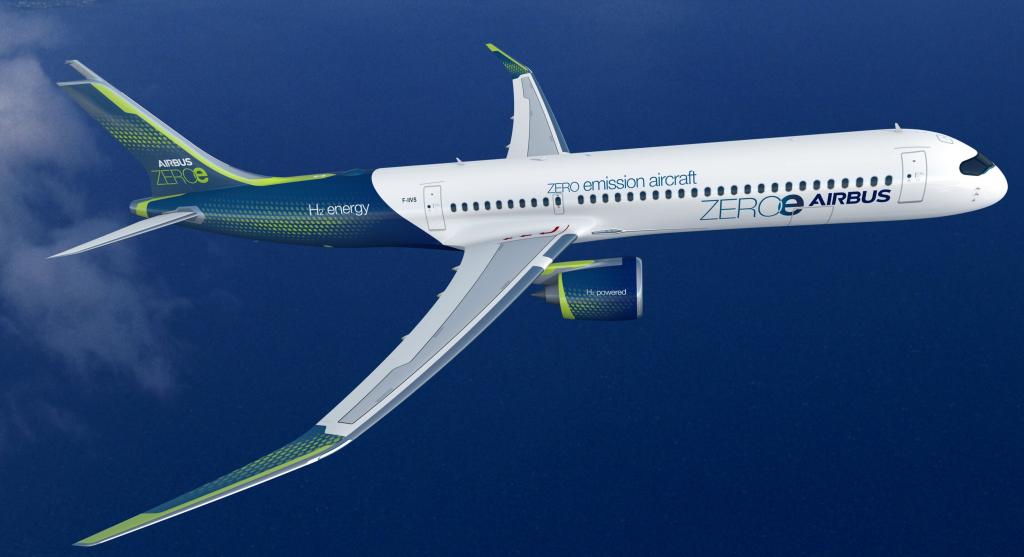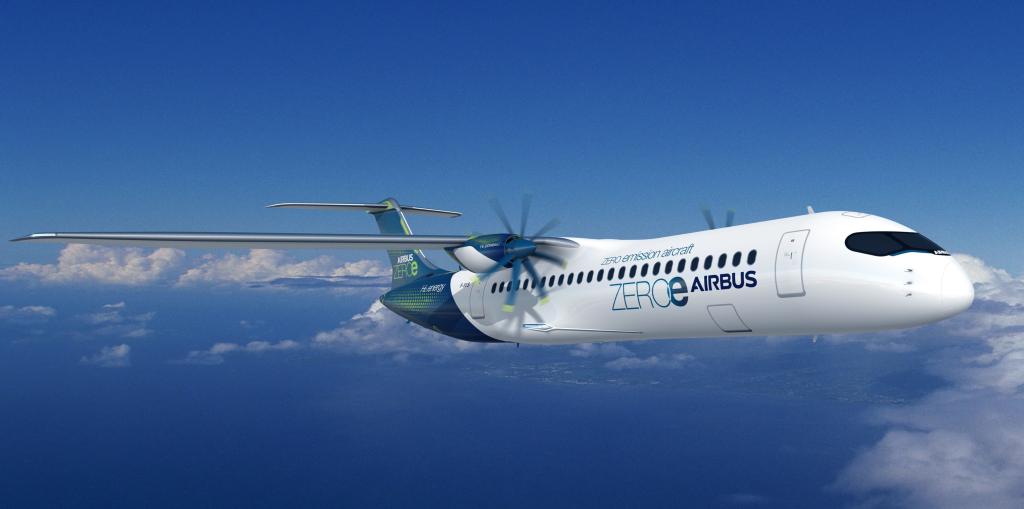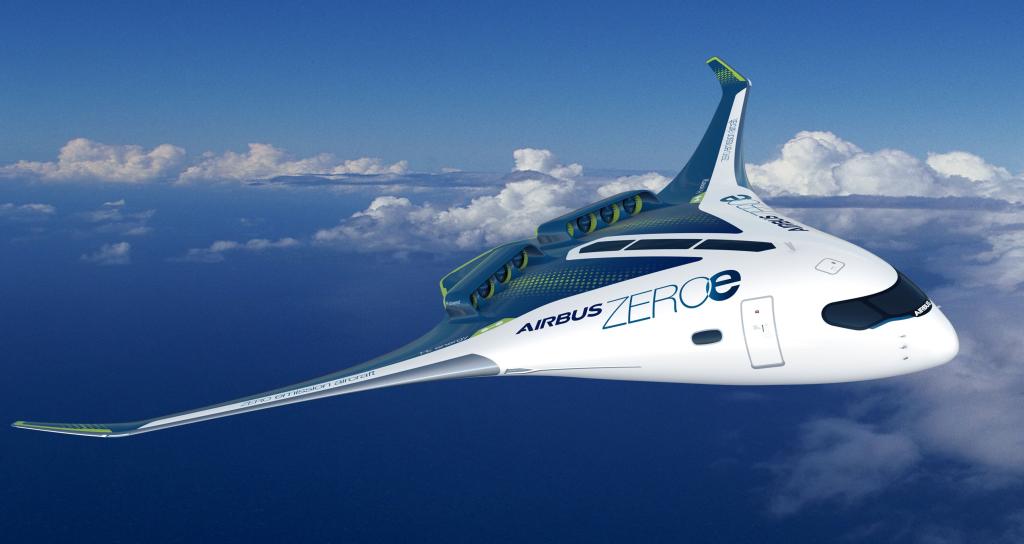All of these concepts rely on hydrogen as a primary power source - an option which Airbus believes "holds exceptional promise" as a clean aviation fuel and what it sees as "likely to be a solution" for aerospace and many other industries to meet their climate-neutral targets.
"This is a historic moment for the commercial aviation sector as a whole and we intend to play a leading role in the most important transition this industry has ever seen," explains Guillaume Faury, CEO of Airbus after unveiling a glimpse into the future. "I strongly believe that the use of hydrogen - both in synthetic fuels and as a primary power source for commercial aircraft - has the potential to significantly reduce aviation's climate impact," he adds.
There are three concepts for a first climate neutral zero-emission commercial aircraft, all codenamed "ZEROe".
The first is a turbofan design to carry between 120 and 200 passengers with a range of 2,000+ nautical miles, capable of operating transcontinentally and powered by a modified gas-turbine engine running on hydrogen, rather than jet fuel, through combustion. The liquid hydrogen will be stored and distributed via tanks located behind the rear pressure bulkhead, according to Airbus

The second is a turboprop design for seating up to 100 passengers using a turboprop engine instead of a turbofan and also powered by hydrogen combustion in modified gas-turbine engines, which would be capable of traveling more than 1,000 nautical miles, making it a perfect option, according to Airbus, for short-haul trips.

The third and most radical is a blended-wing body designed to carry up to 200 passengers in which the wings merge with the main body of the aircraft with a range similar to that of the turbofan concept. The exceptionally wide fuselage opens up multiple options for hydrogen storage and distribution, and for cabin layout, says Airbus.

Together these concepts will be used by Airbus to explore and mature the design and layout of one of the world's first climate-neutral, zero-emission commercial aircraft, which it hopes to put into service by 2035. Guillaume Faury noted that the transition to hydrogen, as the primary power source for these concept planes, "will require decisive action from the entire aviation ecosystem".
He hopes that together with the support from government and industrial partners Airbus "can rise up to this challenge to scale-up renewable energy and hydrogen for the sustainable future of the aviation industry".
There will be notable challenges though, none more so than airports requiring significant hydrogen transport and refuelling infrastructure to meet the needs of day-to-day operations. Airbus believes that support from governments will be key to meet these ambitious objectives with increased funding for research & technology, digitalisation, and mechanisms that encourage the use of sustainable fuels and the renewal of aircraft fleets to allow airlines to retire older, less environmentally friendly aircraft earlier.
At the start of the year, Airbus revealed MAVERIC, a disruptive blended wing body scale model technological demonstrator. Standing for Model Aircraft for Validation and Experimentation of Robust Innovative Controls, Airbus has been leveraging emerging technologies to pioneer the future of flight and testing disruptive aircraft configurations to evaluate their potential as viable future designs.
Airbus believes the disruptive aircraft design has the potential to reduce fuel consumption by up to 20% compared to current single-aisle aircraft. At the time it highlighted how the configuration also opened up new possibilities for propulsion systems type and integration, as well as a versatile cabin for a totally new on-board passenger experience.